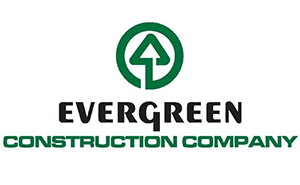Introducing the NC Property Tax Impact Calculator, with our first two counties live!
One of the most frustrating things about a property revaluation is receiving your new value and not knowing how it will impact your property taxes until after the appeal deadline.
While it’s correct that you won’t know the exact impact of your new value until the new tax rates are set in the summer, there are ways to estimate the impact of your new value on your property taxes–and to see why it’s important to pay attention to your city and county’s upcoming decision on a new tax rate.
To help with this, we have created this calculator that is set up to give owners in Durham and Orange Counties an estimated change in your property taxes this year. Our hope is to expand this tool in the future to other counties in North Carolina.
Mobile Friendly Version
Please note: the calculator has been updated for Durham to include the updated Revenue Neutral tax rate on the low end of the estimate and with the current proposed Durham combined tax rate on the high end of the range. If the current Durham proposed budget passes, the high number on the range should be most accurate.
Directions
The tool is simple. Search for your address and it should pull up your previous value, your new value, and the estimated change in your property taxes. If your address is not searchable or the data it pulls up seems incorrect, you can manually enter your previous and new property values. If you do this, make sure to choose the correct county.
The calculator considers your old and new value, the change in your value compared to the change in overall estimated county property value (and a few other pieces described in methodology below), and the most common range of tax rates following revaluations. The results are designed to give a sense of the potential impact of your new value. The calculator can be especially helpful at showing that:
- A rise in your value does not necessarily mean your property taxes will increase; it depends on your increase vs the overall property value increases in your area (we have a long explanation about this in a blog post here). For example, in Durham, the county estimates that real property value increased by 75% with this revaluation, and we estimate that Durham’s total property value will increase ~64%. Based on a few additional factors, including a range of possible tax rates, our calculator predicts that if your value increases less than 50% in Durham, you are more likely than not to see a decrease in property taxes (Orange County’s values rose less than Durham’s, so this threshold is about 20% lower).
- For example, take a property in Durham whose value went from $200,000 to $300,000 (a 50% increase). This is a $100,000 increase in value, yet this owner is estimated to see a slight decrease in their property taxes even if the tax rate is 5% higher than the “revenue neutral” rate.
- What about an owner in Durham whose value went from $3 million to $4 million, a $1,000,000 increase in value? They would likely see a decrease of ~$3,000-$6,500 in their property taxes! How? Their increase in valuation (33%) was well below the average.
- A larger rise in your property value than the overall county rise will almost certainly lead to a property tax increase if not successfully appealed. In other words, a home with an average increase of 75% in Orange County or 100% in Durham County–which is the average in many historically Black neighborhoods–will see a substantial tax increase if their values are not successfully appealed and/or they do not get additional tax relief.
- For example, one resident in Hayti’s home value rose from $70,000 to $240,000. Even if Durham lowers their tax rate to the “revenue neutral rate,” which is lower than the vast majority of counties do in revaluation years, these homeowners would still see their property taxes double.
- Or, take a slightly less extreme example of a property in Walltown that saw its value rise from $200,000 to $400,000. In this case, even if Durham chooses the low-end of tax rates, this owner would still likely see a $750+ rise in property taxes.
- While the change in your value matters most, the ultimate tax rate makes a difference too. This estimate provides the most common range–and yet you will see that range can span several hundred dollars. In other words, the tax rate that your city and county choose in relation to the “revenue neutral rate” matters.
Important Notes and Disclaimers:
- This is an estimated range only based on the best currently available data. The property tax bill depends on both your total assessed value and the eventual property tax rate. Since the rate won’t be decided until the summer and the final valuation numbers will change some with appeals, we have used the best data currently available. As final “revenue neutral rates” are published, we will update our estimates to reflect any differences. Methodology is listed below this section.
- We have decided to include a range of dollar amounts because we think most owners think in dollar amounts, but this also opens the calculator up to more potential errors. We are happy to double check and will continue to update it as we go.
Orange County Properties:
- If you enter a specific address: The estimated amount of property tax change reflects your total combined tax rates (county, city if any, fire district if any, school tax if any) based on your previous tax bills, effective tax rates from last year, and estimated revenue neutral rates from the various districts. This means that if you live in Carrboro or Chapel Hill or Hillsborough versus in the rural area of the county, the same value changes will result in a different estimated tax amount. It also means that the calculator should be adjusting for tax relief programs and deferments. The values projected will be your full values, but the tax amounts should be reduced based on your exemptions. If your exemptions have changed, this amount likely does not reflect that change, and therefore the amount itself would be inaccurate.
- If you enter amounts manually: The calculator provides only an estimated percent change in your property taxes, so that it provides a decently accurate range of change regardless of where you live in the county without needing the many specific tax areas.
Durham County Properties:
- The values provided if you type in your address are based on recently downloaded County data but may not be 100% accurate. Townhouses, condos, commercial properties, and vacant land were not included in the Durham data, so you will need to manually enter your information if you own one of those property types.
- If you enter a specific address: The estimate for Durham County properties uses the combined Durham city/Durham county rates. For those outside the Durham city limits or in another municipality in Durham, the estimated property tax change amounts at the bottom will not be accurate. You should try manually entering the valuation amounts, since the percent change it shows you should be more accurate.
- For those who receive Homestead Exemptions or other property tax exemptions, the increases stated here do not reflect those reductions. For example, if the calculator says your property taxes will likely increase by $500-$1,000 and you have the NC Homestead, that number would be cut in half ($250-$500).
Methodology:
This calculator uses several estimated numbers:
- The low end of the estimated range is based on an estimated “revenue neutral rate” which is the property tax rate that the city and county begin their budget discussions based on: a tax rate that would largely off-set the overall change in value to produce the same amount of revenue plus a small increase for annual growth. In Durham and Orange County’s case, that revenue neutral tax rate would decrease significantly to adjust for the large rise in property value. A revenue neutral rate must factor in the overall rise in property value (real and other) and an annual growth rate. Neither Durham nor Orange has released their revenue neutral rate or their estimated rise in personal property, auto, and utilities, which make up close to 20% of the property value. Our estimated revenue neutral rate uses the real property value numbers shared by the tax administration, an increase in utility value back up to 100%, and an average of the last several years of changes in each of those other categories. We will adjust these numbers as new information comes in but do not think this will shift more than a couple percent at most.
- The rest of the range above the “revenue neutral rate” is the most likely range of new tax rate of rates based on what counties, including Durham and Orange, have done over the last 200 valuations across the state (from a “revenue neutral rate” to 10% above that). We used the study from UNC School of Government shared here to guide this. This study showed that counties with rising values chose a new tax rate an average of ~5% above the revenue neutral rate. That is the center of our range. A few counties chose rates above the high end of our calculator’s threshold. None chose a rate below revenue neutral in a revaluation year.
- This estimate will likely shift some as final numbers for the valuation are made available. Our estimate is that the range could shift 2-3% in either direction, but hopefully this captures most possibilities.
If you see a problem with the data or methodology, please let us know by emailing propertytax@nchousing.org.







